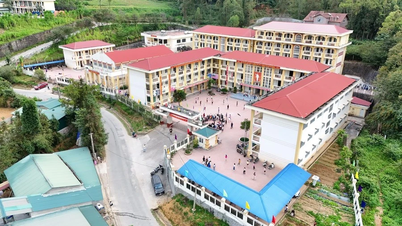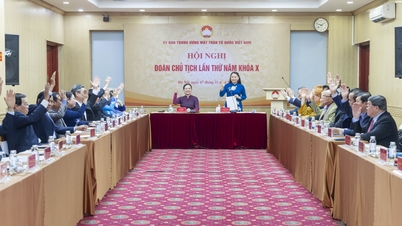Accordingly, teachers and civil servants in general are currently applying the Professional and Technical Salary Table for cadres and civil servants in State-owned enterprises (Table 3). Table 3 has 10 salary scales arranged in order from low to high, but only 3 teacher titles are applied the salary of type A3 civil servants: senior university lecturer, senior vocational education lecturer, senior vocational education teacher, accounting for about 1.17% of the total number of teachers.
While this rate in other sectors and fields is about 10% compared to the total number of civil servants in the sector and field (senior positions). The remaining senior teacher positions (grade I in preschool, general education, continuing education, and university preparatory levels) account for about 8.83% of the total number of teachers, and are only ranked as A2 civil servants (equivalent to the main civil servant positions in other sectors and fields).
The Ministry of Education and Training believes that the salaries of most teachers (except college and university lecturers, vocational education teachers) are ranked lower than those of civil servants in the health , construction, transportation, justice, culture - sports, science - technology, information - communication sectors... Thus, the current salary ranking of teachers does not ensure correlation between sectors and professions despite having the same training requirements. Therefore, the Ministry proposed a specific coefficient of 1.25 for preschool teachers, 1.15 for general education teachers; 1.2-1.3 for teachers of disabled students, integrated students, and boarding schools. If approved, the monthly salary of teachers will range from 6.14 to 18.66 million VND, an increase of 1-2 million VND compared to present. Along with that, teachers also enjoy one or several types of allowances, such as seniority allowance (calculated after 5 years of work, 1 year each), preferential job allowance (35%-70%), toxic allowance...
The proposal that teachers should enjoy a "special salary coefficient" is creating a lot of controversy. Many opinions compare that medical staff work many times harder, work at night, on holidays, face risks, but have lower salaries. In the current context, any proposal needs to take into account the harmony between professions in society to avoid creating comparisons. Some National Assembly delegates also expressed a cautious view on this proposal of the Ministry of Education and Training. Many delegates noted that it is necessary to take into account the harmony between salaries between professions, take into account the implementation roadmap, and evaluate resources to ensure feasibility in implementation, because the number of teachers and staff in public educational institutions is very large.
The Law on Teachers stipulates that "teachers' salaries are ranked highest in the administrative career salary scale system". Salary policy is a key solution to help attract talented people to become teachers, improve the quality of the teaching staff, thereby improving the quality of education and training. However, with a policy that is receiving great attention from society, it is necessary to have an impact assessment report from the Ministry of Education and Training to convince society. Because, the Ministry of Education and Training itself also admits that the salary arrangement of teachers can only be fundamentally resolved when the Government issues a new salary policy and rearranges the salary scale of teachers and other civil servants...
Source: https://www.sggp.org.vn/bao-dam-luong-hai-hoa-giua-cac-nganh-nghe-post822187.html


![[Photo] Da Nang: Hundreds of people join hands to clean up a vital tourist route after storm No. 13](https://vphoto.vietnam.vn/thumb/1200x675/vietnam/resource/IMAGE/2025/11/07/1762491638903_image-3-1353-jpg.webp)














































































































Comment (0)